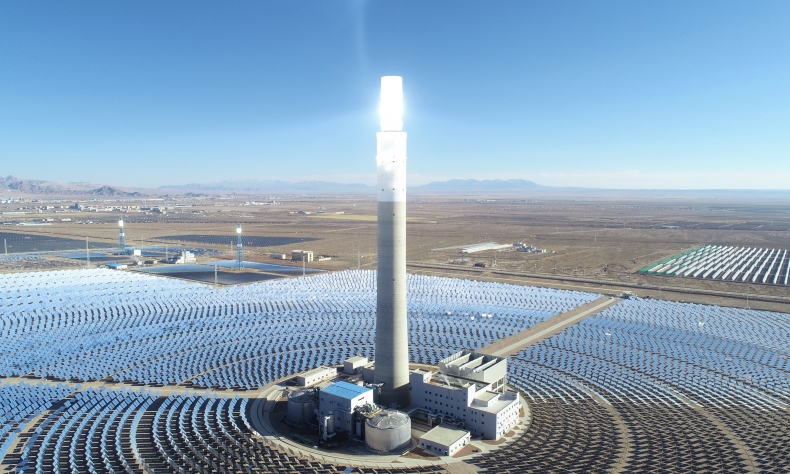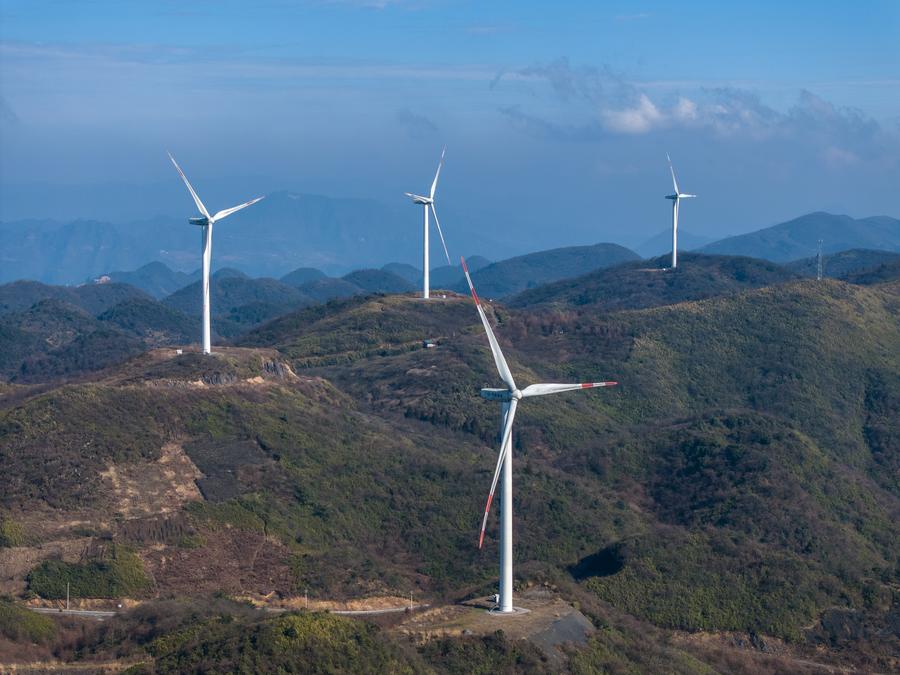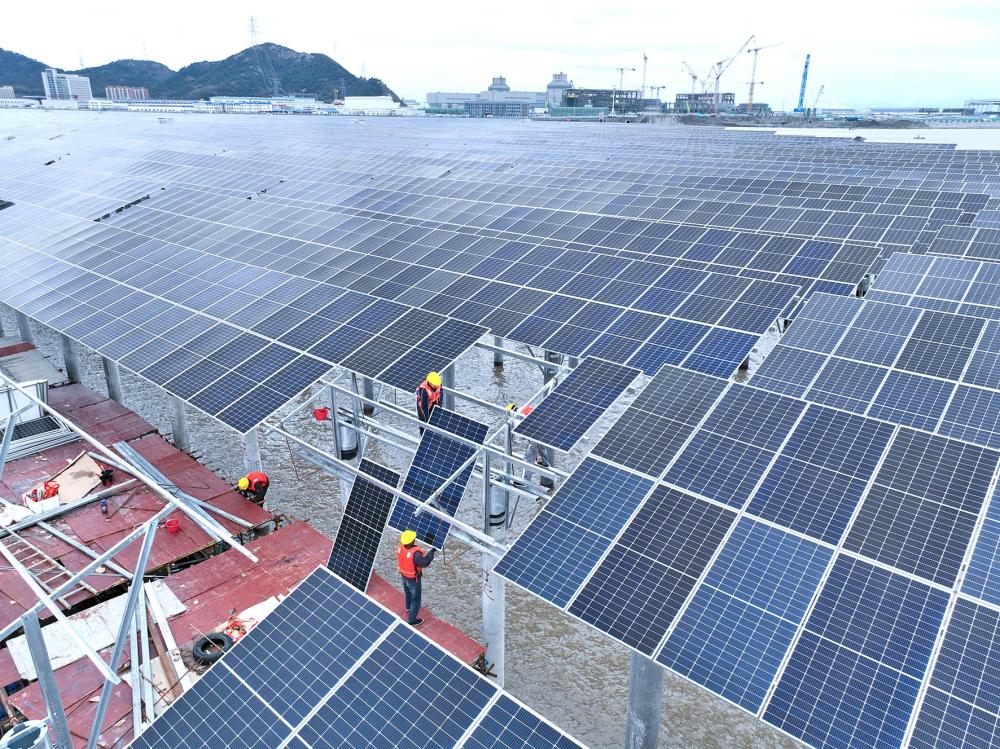Emerging CCER Scheme Promotes Carbon Neutrality

The China Certified Emission Reduction scheme is an important basic policy tool to help China achieve its carbon peaking and carbon neutrality goals.
The China Certified Emission Reduction (CCER) scheme is a vital channel that is helping China and its enterprises achieve carbon neutrality. At the same time, it is also promoting the development of the carbon market and low-cost emission reduction. Since an interim administrative document on voluntary greenhouse gas emission reduction trading was issued in 2012, a relatively complete operating and management system has been established and a constant flow of trading has been carried out.
Ten years
“The CCER scheme was inspired by the EU carbon market. China mainly participates in the market through the Clean Development Mechanism, one of the three flexible compliance mechanisms that were introduced by the Kyoto Protocol, to trade emission reductions from renewable energy projects that meet the standards,” said Liu Jiapei, director of the Power Marketing Department of China General Nuclear Power New Energy Holdings Co., Ltd. (CGN New Energy), a subsidiary of China General Nuclear Power Corporation (CGN).
With its commitment to clean energy, CGN entered the EU market back in 2007 with an annual revenue of tens of millions of RMB. According to Liu, participating in the EU carbon market played a specific role in stimulating China’s development of renewable energy. China has been piloting its carbon trading market since 2013, but the number of projects approved during the early stage was too large to be absorbed by the limited market capacity. Due to the imbalance between supply and demand as well as a lack of standardization of individual projects, relevant departments announced in March 2017 the suspension of accepting CCER projects for filing and certification of emission reductions.
Up until October 2023, the Ministry of Ecology and Environment and the State Administration for Market Regulation issued a trial administrative document on voluntary greenhouse gas emission reduction trading. Subsequently, relevant departments and institutions began to issue rules and regulations that included such aspects as project methodology, registration rules, design and implementation guidelines, transaction rules, and certification rules. With these policies and institutional guarantees in place, the long-awaited CCER scheme was officially launched on January 22, 2024, with a total trading volume of about 375,000 tons and a total turnover of about RMB 23.84 million on the first day.
Zhang Da, an associate professor of the Institute of Energy, Environment and Economy at Tsinghua University, who has been conducting in-depth research on the carbon market for a long time with his research team, participated in the evaluation, revision, and selection of CCER methodology, as well as the solicitation of opinions and advice from experts on some policy documents.
“The CCER scheme is an important basic policy tool to help China achieve its carbon peaking and carbon neutrality goals,” Zhang said. He believes the CCER scheme will complement the mandatory carbon market launched in 2021 and jointly form a complete national unified carbon market trading system.
According to Zhang, the methodology currently used by CCER involves afforestation carbon sinks, grid-connected solar thermal power generation, grid-connected offshore wind power generation, and planting mangroves. In the future, more new methodologies will be introduced to support the development of more types of voluntary emission reductions.
“The launch of the CCER scheme also emphasizes an increase in information transparency. The projects and emission reduction information which are based on new methodologies will be disclosed in China’s registration system and information platform for voluntary greenhouse gas emission reduction, and the transaction data will be made public in China’s trading system for voluntary greenhouse gas emission reduction for inquiries from all walks of life,” Zhang said.

Path of development
The CCER scheme responds to market demands and social voices. “The mandatory carbon market has launched trading online for more than two years, and the stock of the CCER scheme has been obviously insufficient,” said Zhang. According to statistics, 1,315 projects have been completed, and 391 projects have received certification of about 77 million tons of emission reductions. Of that number, about 60 million tons have been used to pilot the carbon market and offset the settlements and performances of market sharing quota. As of June 2023, the cumulative trading volume of nine trading institutions across China has reached 450 million tons. He predicted that with the gradual expansion of the mandatory carbon market in the future, the demand on the CCER scheme will rise even further.
“The CCER scheme has the capacity to mobilize the enthusiasm of enterprises, groups, and individuals in various industries to reduce their emissions, promote the innovation and development of low-carbon, zero-carbon, and carbon-negative technologies. It also encourages them to play a positive role in raising public awareness of carbon emission reduction and reducing the total cost of emission reduction,” Zhang added.
According to Liu, the launching of the CCER scheme has enabled various new energy projects to benefit from the carbon market by adding an additional revenue channel. In addition, the CCER scheme strictly controls project standards and specifications, thereby maintaining a relative balance between supply and demand, which is a manifestation of high-quality development.
After more than four decades of development, CGN’s business now covers fields including nuclear energy, nuclear fuel, new energy, nuclear technology for non-power uses, digitalization, technology-based environmental protection, and industrial finance. Among China’s power companies, CGN is one of the first involved in the photovoltaic heating industry and has participated in the compilation of methodology for grid-connected solar thermal power generation.
Compared with traditional photovoltaic power generation, solar thermal power generation has more advantages. “While photovoltaic power generation directly converts solar energy into electricity, its power energy density is small and the storage efficiency low,” Liu explained, “Solar thermal power generation, on the other hand, increases the conversion of heat energy during the intermediate process, which can be understood as thermal energy naturally has the effect of both energy storage and power generation, and is relatively more stable.”
However, despite the advantages of solar thermal power generation, because it has high requirements for regional conditions and the technology used in it is complex, it had not been developed on a massive scale. This resulted in the costs of its technology, raw materials, upstream and downstream equipment, and operation still remaining quite high.
In 2018, CGN New Energy began operating the first commercial solar thermal demonstration power station in China, the Delingha power plant in Qinghai Province. The challenges it faced at that time was that there were few manufacturers in the upstream and downstream industrial chain, the investment was huge, and the dependence on state subsidies was strong, thus producing relatively low economic benefits.
These challenges all changed with the launching of the CCER scheme. According to Liu’s calculations, a 50-megawatt project, running for 2,400 hours a year, could reduce carbon dioxide emissions by about 80,000 tons. If it is sold at a price of RMB 60 per ton under the CCER scheme, the annual income would reach about RMB 5 million. This in the end would effectively improve the income of the project, and then promote the development of related technologies.

Gradual improvement
Since China officially set its carbon peaking and carbon neutrality goals, public awareness of this niche industry in the carbon field has greatly improved. A growing number of enterprises have paid attention to the amount of carbon emissions they make and carried out carbon neutrality plans. Meanwhile, a number of new professions such as carbon traders, carbon asset managers, and carbon verifiers are also emerging, and various relevant professional training is in full swing. “This represents a good start, and everyone has taken the first step in carbon reduction,” said Liu.
Like CGN, Zhang said after the news of launching the CCER scheme came out, many other companies responded quite positively. There have been heated discussions regarding management methods of project operation and policy documents. Some project owners who meet the conditions for the application of the new methodology are also actively preparing for project development.
Zhang suggested that enterprises who are interested need to familiarize themselves with the relevant rules as soon as possible, accurately understand the requirements put forward by the market, and put in place the required conditions. “These include corresponding documents and materials, preparation of project development, and data quality compliance,” Zhang said, “The Ministry of Ecology and Environment is conducting publicity and training in this regard.”
The Ministry of Industry and Information Technology issued guidelines for the construction of a carbon peaking and carbon neutrality standard system in the industrial sector on February 4, 2024. By 2025, a standard system should be initially established, and more than 200 standards for carbon peaking will be formulated, focusing on formulating standards in the fields of basic general specifications, greenhouse gas accounting, low-carbon technology, and equipment, and so on, to provide technical support for the industrial sector to carry out carbon assessment and reduce carbon emissions.
According to plans, a relatively complete standardized system will be formed by 2030. Standards for coordinated carbon reduction, carbon emission management, and low-carbon evaluation will also be accelerated, so as to achieve full coverage of standards in key industries and areas, support the comprehensive peaking of carbon emissions in the industrial sector, and gradually shift the focus of standardization work to the goal of carbon neutrality.
This guideline has injected new life into the CCER scheme. “For the improvement and smooth operation of the CCER scheme, we will continue to actively cooperate with the competent authorities, continue to pay attention to the operation of the CCER scheme from the perspective of scientific research, and provide theoretical and empirical support for its development,” Zhang said. He hopes to share China’s experience in developing the CCER scheme with other countries through international academic exchanges, and improve China’s influence in international carbon pricing.
 Facebook
Facebook
 Twitter
Twitter
 Linkedin
Linkedin
 Google +
Google +










